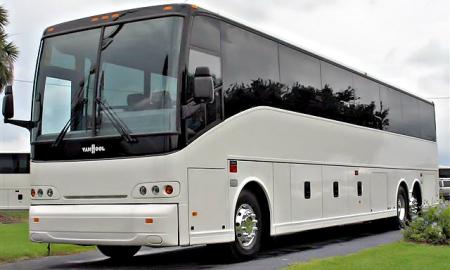Ever wondered how your supplies and equipment gets shipped over from the other side of the world? It’s most likely a combination of land, air or sea logistics. Sometimes your orders will be shipped over in a large freight container, other times they’ll travel through the air in a cargo plane, and the final journey is most likely done with a truck or van.
The combination of land, air and sea make up most of the international trades we deal with today. It’s a lucrative business with the potential to work for some big brand companies. After all, not every business is large enough to have their own private shipping services. Almost everyone consults a logistics expert and trusts them to deliver both sensitive packages and bulk items.
Picture Source
If you prove to be a good value service with a clean track record, then you’ll be approached by all kinds of brand names or even government officials to deliver goods across the world. Are you interested yet? You’re going to need incredible leadership skills and an extreme amount of dedication and motivation because this is no laughing matter! Read on to find out how you can get your foot in the door and start your own international trade business.
It’s a Huge Investment
Transport and distribution can’t be done with the necessary tools: vehicles. Arguably the most expensive part of setting up your own international trade business are the cars, ships, and planes needed. Of course, you can always rent vehicles, but what’s the point if you’re going to be a business that specialises in trading across the world?
Businesses won’t take you seriously if you don’t own a fleet of branded vehicles to tackle your transportation needs. First of all, consider what you’re going to need to get started. You don’t need a dozen ships to start with, and you don’t need more than a couple of cars or trucks to begin. You can start small and deal with intercontinental deliveries first.
Picture Source
Land Transport
When starting out, consider hiring long-distance truck drivers. You have the option of hiring a driver with experience and their own vehicle, but you can also hire drivers and use your own vehicles. The latter is more enticing for potential employees because not everyone owns a huge truck of their own. Make sure you insure your own vehicles. Accidents can happen, and you also need to guarantee that your cargo will make it to its destination. This means you’ll also need to consider insurance for your delivery, and you’ll have to discuss with potential clients on how to go about it.
Once you’ve got enough traction as a trade business, you can hire more drivers for short distances as well. This is useful for the last few miles for the cargo to reach its destination when you expand to other continents or countries. When your cargo plane drops a delivery at an airport, it’s picked up by other vehicles and then the delivery journey continues. Make sure to plan where you want to have your depots. The best locations are near international airports so there’s less travel time to pick up cargo, but it can be quite expensive depending on the location.
Picture Source
Keep in mind the extra costs when driving long distances across states or countries. There can be traffic delays, the vehicle might break down, and there’s a risk that goods can be damaged while inside the vehicle. Make sure the cargo is secured safely, and request that the driver checks on the cargo at every major stop. There are also toll charges when driving past checkpoints, and the fees might be relatively high in certain countries. Make sure your driver has enough to cover the costs or consider investing in a company card for the driver to use to pay tolls and fees. Your driver will also need to top up the fuel at major stops, so factor in those costs when calculating profit per delivery.
Focusing on land transport at the start is great because of the relatively low cost to start up. Trucks and vans are far cheaper than buying a ship or plane, and each continent has an extensive network of roads which are simple to navigate with a GPS device. There’s no hassle when scheduling a land delivery, and it’s easy to pass through most countries and states.
Picture Source
Air Transport
Air transport is the next step up after you’ve secured a good network of land transportation. Air represents some challenge when it comes to taxes, different currencies, and flight bookings. At the beginning, it might be worth using specialised air transportation services so you don’t need to rent or buy your own cargo planes. It also removes the need to hire a dedicated pilot which can be extremely expensive unless you’re flying cargo regularly.
However, there are some definite advantages to including air transport at an early stage. You can ensure fast deliveries across the world, which many businesses are willing to pay extra for. There’s a lot of space inside each cargo plane as well, which means you can carry sensitive items but also large and bulky equipment. Specialised loading and unloading crews will ensure that your items aren’t damaged, and there is a lot of security involved when shipping things in and out of a country with a plane. You’re likely to encounter some security concerns, but most of them are quickly cleared.
Picture Source
Keep in mind that you’ll need more than just a plane when delivering in the air. You’ll also need another land vehicle at the country you plan to deliver at. In the beginning, you can hire courier services and other companies to do the final stretch, but eventually, you’ll want to start your own land transportation service in that country if you get regular clients because it’s cheaper in the long run. Yes, this means that you can also take delivery and shipping requests from that country, and it can serve as a stop for your existing land transportation network. Before you start transporting by air, consider setting up multiple depots in different countries so you have an easier time transitioning into air transport.
One of the biggest issues with air transportation is scheduling flights to align with your other transportation methods. You want to have the delivery trucks ready to pick up cargo from a plane so that you aren’t forced to pay additional holding fees. It could also cause problems when promising delivery dates, so make sure to keep in touch with the airport and your client and bounce messages between them to ensure everyone stays in the loop and fully understands the transportation situation.
Picture Source
Sea Transport
Once you start considering transportation over the seas, you’re almost in the big boy’s league. Transporting by sea is arguably the most expensive and time-consuming, but the potential reward per delivery is staggering. Ships can carry ridiculous amounts of cargo at a low cost. Each shipping container can carry roughly the same amount as a large truck. You shouldn’t even think about sea transportation until you have several dozen land vehicles transporting goods for you.
Transporting by sea is a slow process, and bad weather conditions can add more unscheduled delays. Routes are also heavily affected by the elements, which can mess with timetables. It’s best to give your clients delivery estimates that span over a week or more to compensate for anything that can come up. There are also port duties and taxes to consider, and tracking goods which are in the sea is almost impossible without some very advanced and expensive equipment.
Picture Source
As with air transportation, consider renting or hiring another business to transport freight containers worth of cargo. Once you have enough contacts that want to transport items via sea, then you can look into purchasing a ship. You can find online services such as 2nd hand Ships for sale - NautiSNP, but you can also contact harbours and ports to see if there are any local businesses that have ships for sale. Make sure that the ship you purchase has enough space to carry all the cargo you need, and plan ahead for expansion. Once you’re transporting an entire ship’s worth of items, you’ll attract more clients and you’ll need the extra space on your ship to carry more freight containers.
Remember that you also need to have insurance for the ship and cargo. Again, you’ll have to contact insurance services and also keep in touch with your clients to decide the best options. When you’re the proud owner of a cargo boat, you’ll also need to hire an entire crew to maintain and operate it. This can get expensive, and you can’t skimp at having just a captain and a handful of crew members. Large vessels require all sorts of occupations. Your crew needs a captain, engineers, cooks, navigation officers, and general deck hands. They also need to operate 24/7, which means you’ll need several of each occupation so they can rotate shifts. You can expect to hire at least 20 people to man a medium-sized ship.
Picture Source
Are You Prepared?
As mentioned at the beginning, starting your own international trade business is no laughing matter. It’s an investment that requires a lot of time, effort, and money. If you’re serious about taking this journey, then best of luck to you—you’ll need it!






